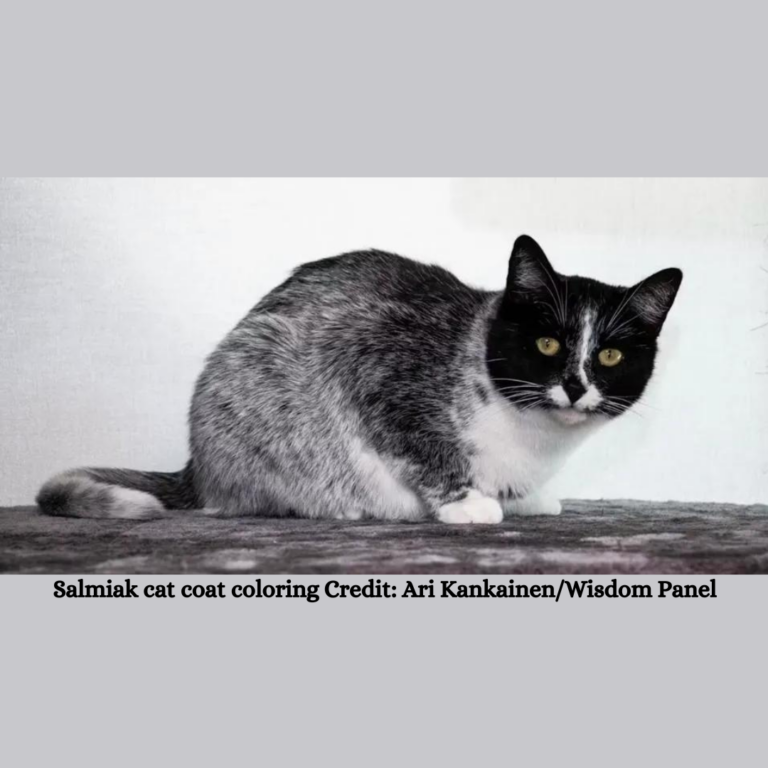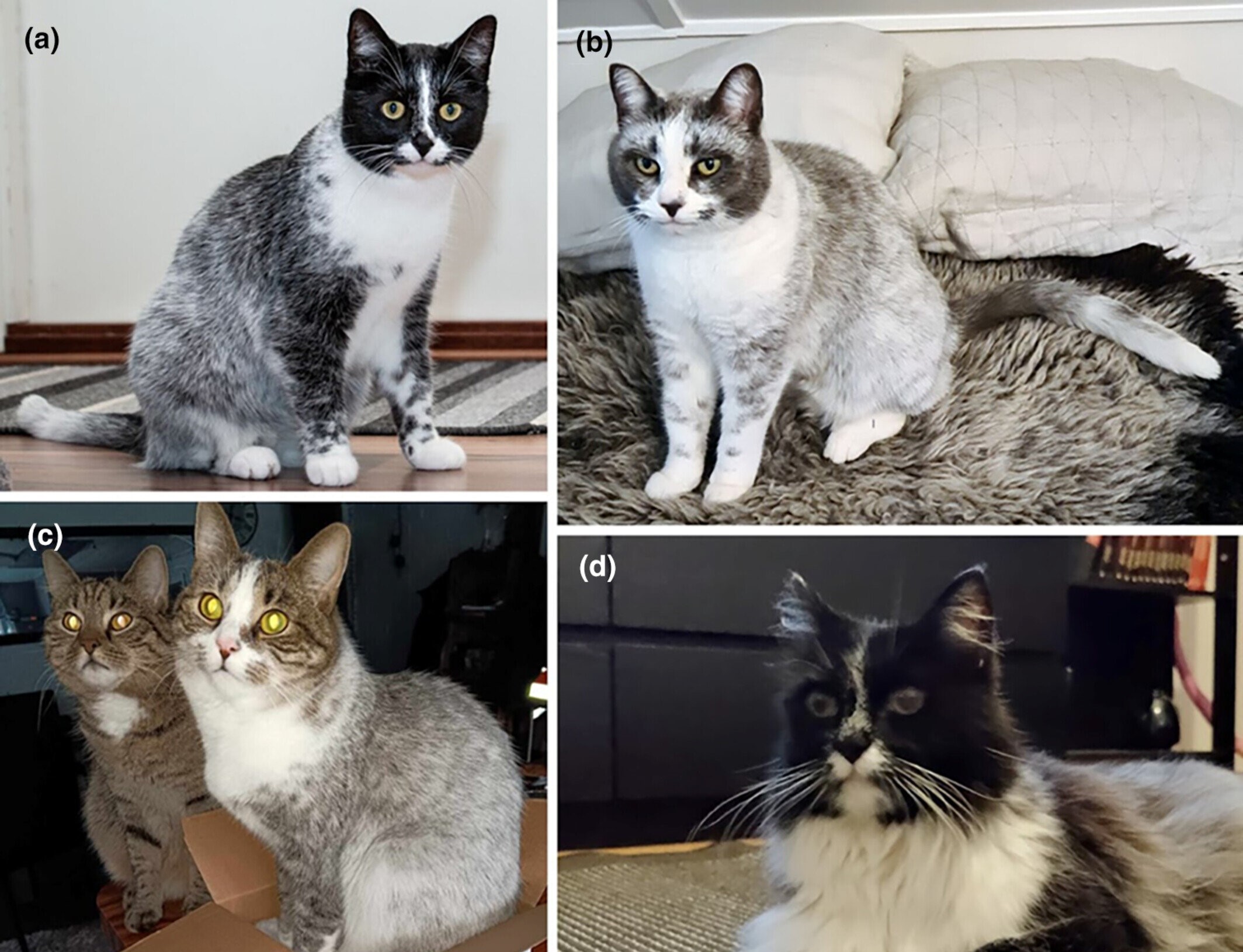Rare Find: Unveiling The Salty Licorice Cat Color Phenomenon
Ever imagined a feline that embodies the mystique of a moonless night, with a scent reminiscent of sweet and savory licorice? The salty licorice cat color is more than just a rarity; it's a genetic marvel, painting a canvas of grayish-black hues upon a cat's coat and setting it apart in the feline kingdom. This unique coloration arises from a specific genetic mutation that influences melanin production, the very essence of a cat's fur color.
Emerging relatively recently in the cat world, the salty licorice cat color remains a scarce phenomenon. The United States witnessed the birth of the first known salty licorice cat in 2004, and since then, only a smattering of others have been documented globally. Reassuringly, these cats generally exhibit robust health and enjoy typical lifespans.
| Attribute | Description |
|---|---|
| Color Name | Salty Licorice |
| First Documented | United States, 2004 |
| Genetic Cause | Mutation in the melanocortin 1 receptor (MC1R) gene |
| Health Concerns | None known; typically healthy |
| Lifespan | Normal |
| Typical Temperament | Friendly, affectionate, intelligent, playful |
| Rarity | Extremely rare |
| Average Price | Varies widely; generally expensive due to rarity |
| Appearance | Grayish-black fur, often with tabby markings, sometimes with a salty licorice-like scent. |
| Reference Website | International Cat Care |
At the heart of the salty licorice cat color lies a mutation within the melanocortin 1 receptor (MC1R) gene. This gene, a key player in regulating melanin production, falters in its function due to the mutation. Consequently, salty licorice cats produce less melanin than their counterparts, resulting in the distinctive grayish-black coloration that defines their allure.
- Is Sabrina Carpenter The Next Hermione Harry Potter Saga
- Decoding Nekololisama What You Need To Know Anime Guide
Notably, the salty licorice cat color isn't linked to any adverse health conditions; these cats typically live healthy, fulfilling lives. However, their rarity inevitably translates into a higher price tag for prospective owners.
Genetics: The root of the salty licorice cat color traces back to a mutation within the melanocortin 1 receptor (MC1R) gene. This genetic anomaly disrupts the normal functioning of MC1R, curbing melanin production and giving rise to the characteristic grayish-black coat.
Rarity: Considered a rare gem within the cat world, the salty licorice cat color boasts only a handful of documented cases worldwide. This exceptional scarcity significantly elevates the cost of acquiring such a feline companion.
- Vegamovies Nl 60fps Stream Movies Tv Shows In Hd Quality
- Tyla Parents Understanding Support Challenges And Success
Health: Embracing good health, salty licorice cats typically enjoy normal lifespans, untouched by any health concerns specifically associated with their unique coloration.
Appearance: Sporting a grayish-black coat that sometimes carries a faint scent reminiscent of salty licorice, these cats often feature short, dense fur adorned with tabby markings.
Temperament: Renowned for their amicable and affectionate nature, salty licorice cats possess intelligence and a playful spirit, solidifying their reputation as wonderful companions.
Salty licorice cat color, a rare and distinctive trait, paints felines in shades of grayish-black while sometimes gifting them with a salty licorice-like scent. The underlying cause lies in a genetic mutation disrupting melanin production. While relatively new to the cat scene, its scarcity is undeniable.
- Genetics: Mutation within the MC1R gene
- Rarity: Few documented cases globally
- Health: No known associated health issues
- Appearance: Grayish-black fur, often with tabby patterns
- Temperament: Known to be friendly, affectionate, intelligent, and playful
- Popularity: Steadily rising amongst cat aficionados
- Cost: Generally expensive due to their limited numbers
The salty licorice cat color stands as a testament to the captivating diversity found within the feline world, captivating enthusiasts with its unique aesthetic and amiable demeanor. As awareness spreads and more breeders recognize this exceptional coloration, it's plausible that salty licorice cats will become more commonplace.
The MC1R gene holds the reins of melanin production, dictating the hues within a cat's fur. Mutations in this gene can diminish melanin levels, leading to a spectrum of coat colors, including the coveted salty licorice.
For a cat to inherit the salty licorice cat color, both parents must carry the recessive MC1R gene mutation. If a cat receives one copy of the mutated gene and one normal copy, it becomes a carrier without exhibiting the salty licorice coloring. Only those inheriting two copies of the mutated gene will display the unique coat.
While a newcomer to the cat color landscape, the salty licorice cat color's visibility is poised to increase as more breeders gain awareness and interest in propagating it.
The scarcity of the salty licorice cat color arises from its genetic underpinnings: the recessive MC1R gene mutation. For a kitten to express this trait, both parents must carry the mutated gene, a relatively uncommon occurrence. The probability of two salty licorice cats mating and producing similar offspring remains statistically low.
- Genetic Bottlenecks: Past genetic bottlenecks could contribute to the rarity. If the ancestral population of salty licorice cats experienced a significant decline, it might have led to the loss of specific genes responsible for the color.
- Limited Breeding: The relative novelty of the salty licorice cat color translates into fewer breeders specializing in it. This limited breeding pool restricts opportunities for these cats to reproduce and pass on the trait.
- Geographic Isolation: Prevalence seems concentrated in the United States, with sparse reports elsewhere. This geographic isolation hints at a possible origin within the US, limiting its dispersal to other regions.
- Increased Demand: Scarcity fuels demand, pushing prices higher and potentially deterring some prospective buyers.
The rarity of the salty licorice cat color undeniably elevates its desirability. Prospective owners should remember the challenges in finding one and prioritize reputable breeders specializing in these cats.
The salty licorice cat color carries no known health risks, allowing these cats to live typical, healthy lives.
This contrasts with certain other rare cat colors, like the white cat, which can sometimes be linked to deafness or other health problems.
The absence of associated health problems is likely linked to the MC1R gene's exclusive involvement in pigmentation, not impacting other bodily functions.
Thus, salty licorice cats can enjoy the same longevity and well-being as any other feline.
Distinguished by its grayish-black fur often adorned with tabby markings, the salty licorice cat color stems from a mutation in the MC1R gene affecting melanin production.
The grayish-black base color arises from reduced melanin, while localized melanin increases create the tabby patterns. This interplay defines the unique and captivating aesthetic.
This unique appearance sets salty licorice cats apart, making them highly sought-after additions to homes and collections worldwide.
Their amiable, affectionate, intelligent, and playful personalities are integral to the allure of salty licorice cats, solidifying their status as exemplary companions for individuals of all ages.
- Friendly: Known for their outgoing nature, they eagerly interact with people, greet visitors, and enjoy socializing with other animals.
- Affectionate: They adore cuddling, purring contentedly on laps, and displaying affection through head-butts and requests for petting.
- Intelligent: Quick learners, they possess remarkable curiosity and excel at games, puzzles, and learning tricks.
- Playful: They enthusiastically engage in play, enjoying toys, laser pointers, climbing, and exploring their surroundings.
In essence, salty licorice cats are joyful companions, bringing happiness to their owners.
Fueled by its distinctiveness, the salty licorice cat color is gaining traction amongst cat enthusiasts, driven by a fascination with the unique grayish-black fur and tabby markings arising from the MC1R gene mutation.
Growing popularity translates to higher demand and prices, possibly hindering accessibility for some. However, the exceptional nature and charming personality of these cats make them worth the pursuit.
This surge in popularity underscores a broader appreciation for rare and unique feline aesthetics. As knowledge of the salty licorice cat color expands, its prominence is likely to amplify.
Scarcity directly influences cost. With limited numbers worldwide, breeders command premium prices for salty licorice cats.
- Supply and Demand: Basic economics dictate that rarity combined with desire drives prices upward.
- Breeding Costs: Selecting breeding pairs, providing specialized care, and covering veterinary and supply expenses inflate costs.
- Health Testing: Proactive health testing further contributes to the overall expense.
- Profit Margin: Breeders necessitate a profit to sustain their operations, factoring into the final price.
The elevated price may deter some, but for enthusiasts seeking a truly rare and captivating feline, the expense might be justified.
Here are some frequently asked questions about the salty licorice cat color, a rare and striking trait defined by grayish-black hues and, at times, a salty licorice-like scent. The result of a genetic mutation that impacts melanin production, responsible for feline coat color.
Question 1: Are salty licorice cats healthy?
Generally, yes. They typically have normal lifespans, and no specific health concerns are associated with the salty licorice cat color.
Question 2: How much do salty licorice cats cost?
Their rarity elevates their price. Breeders often charge premiums due to high demand and limited supply.
Summary: Unique and desirable, salty licorice cats, though often expensive, offer great companionship and generally enjoy robust health.
The salty licorice cat color, with its captivating grayish-black tones and occasional salty licorice scent, arises from a genetic quirk impacting melanin. Healthy and long-lived, these felines offer wonderful companionship due to their friendly natures.
The rising interest in salty licorice cats reflects a growing appreciation for unusual feline traits, suggesting their popularity will continue to rise in the future.
- Yikes What You Need To Know About The Yajana Cano Leaked Scandal
- Vegamovies 4k Is It The Future Of Streaming Or Just Hype

Salmiak Coat Color in Domestic Cats The Tiniest Tiger

New Cat Pattern Is 'Salty Licorice' Mutation Lipstick Alley

Finnish mutation tällainen on harvinainen suomalainen värimuunnos